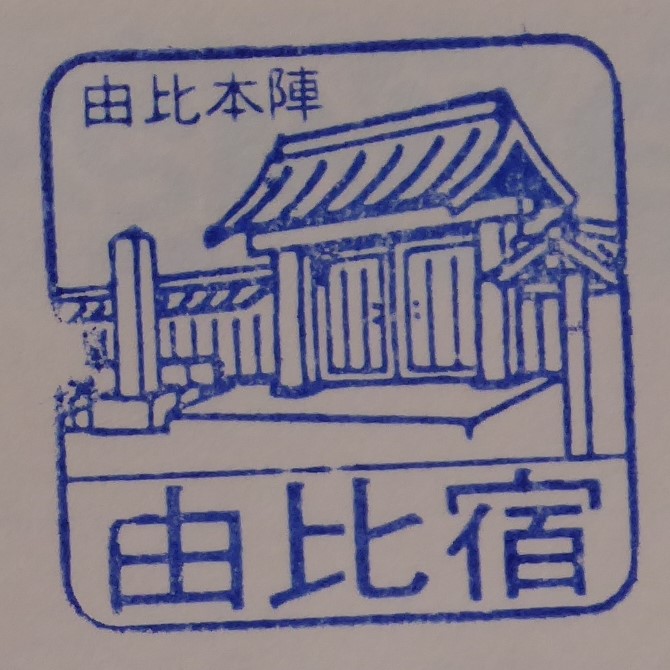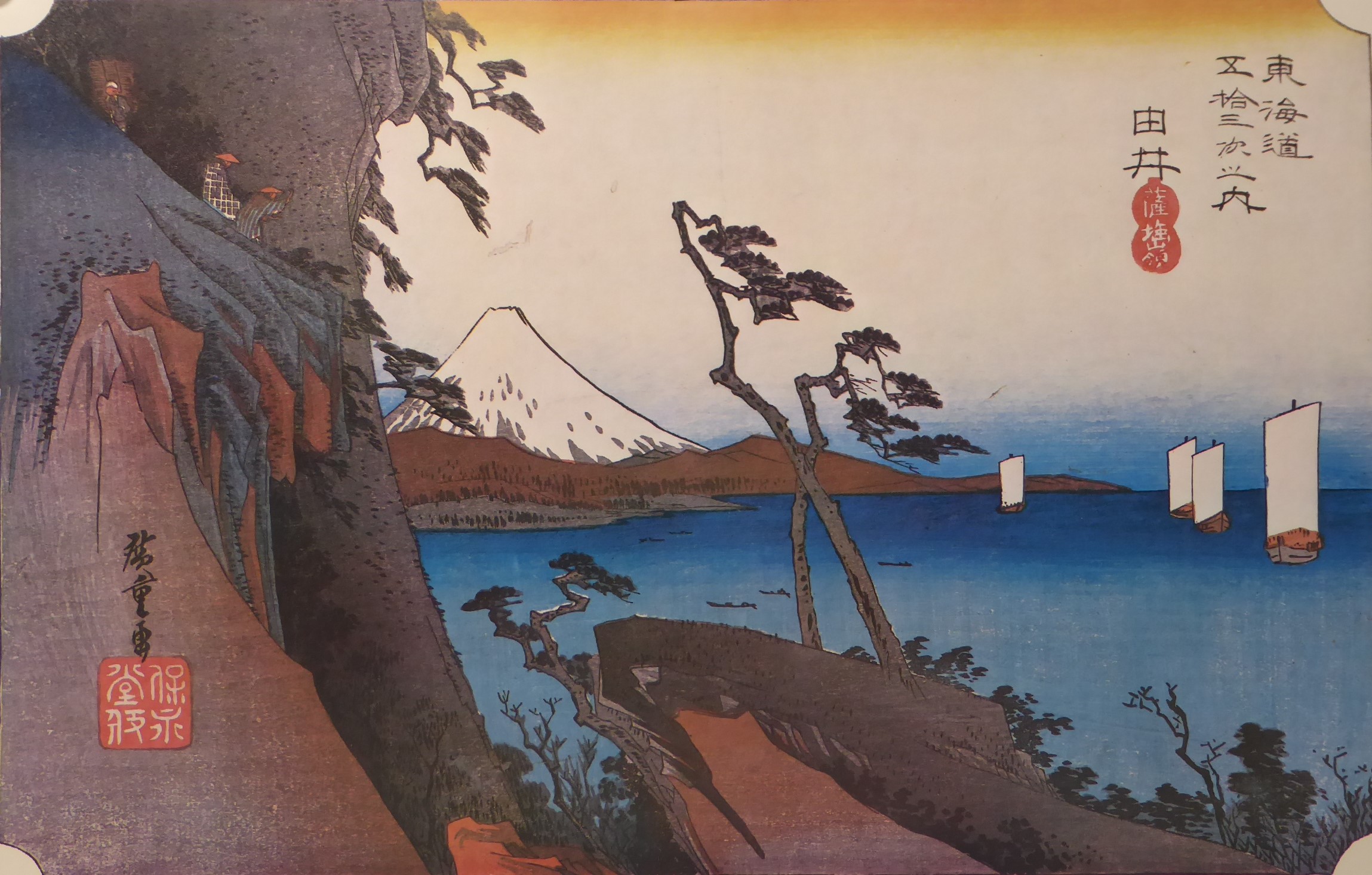Explanation of the Fifty-three Stations of the Tokaido 17 Yui
9.2km from Okutsu to Yui, 35°06′27.0″N 138°34′03.0″E
Yui is the 16th post station on the Fifty-three Stations of the Tokaido.
It is currently Shimizu Ward, Shizuoka City, Shizuoka Prefecture.
The post station is a small one with one honjin, three wakihonjin, and 32 ryokan, a population of 713, 160 houses, and a streetscape of about 600m long.
It was smaller than Kambara and Okitsu.
It was difficult to procure the number of people and horses (100 people, 100 horses) allocated to each post station on the Tokaido, so 11 villages were designated as additional post stations, and there were 20 villages designated as assistant villages.
The honjin was located in the center of the post station, and was a vast site of about 1,300 tsubo.
The descendants of Yui Sukeshiro Mitsunori, a vassal of the Imagawa clan and lord of Yui Castle, inherited the name Iwabe Goemon for generations, and served in that position until the Meiji era.
After Yui-juku, one must cross Sattatsu Pass, known as a difficult spot.
Although small, Yui-juku was an important post station for preparing to cross the pass.
Near the border between the Okitsu and Yui districts, Mount Sattatsu juts out into the sea.
In the old days, it was necessary to run along the coastline without being swept away by the waves.
For this reason, it was said to be one of the three most difficult spots on the Tokaido.
Sattatsu Pass was built on the mountain side as a detour route for the first visit of Korean envoys to Edo in 1607.
Located north of Shimizu Port facing Suruga Bay, Sattatsu Pass is a small pass at an altitude of 93 meters.
The view of Mount Fuji and Suruga Bay from the observation point at the pass is spectacular.
Currently, the mountain pass is a narrow road on a steep slope with mandarin orange and loquat fields, but a promenade has been developed between Okitsu Station and Yui Station.
There is a monument to Sakura shrimp at the entrance to the fishing port.
Sakura shrimp can be found all over this town.
This town is known nationwide for its delicious Sakura shrimp.
There are about 120 boats with licenses for Sakura shrimp fishing in the Yui, Kambara, and Oigawa areas.
100% of domestic Sakura shrimp are landed in Suruga Bay.
In Japan, they are distributed in Suruga Bay and the nearby Enshu Nada, Tokyo Bay, and Sagami Nada Bay, and off the coast of the Goto Islands in Nagasaki Prefecture.
They are only harvested in Suruga Bay.
It is said that the beginning of Sakura shrimp fishing was in 1894, when a fisherman in Yui was fishing for horse mackerel with a net and his net went deep into the water, accidentally catching a large amount of Sakura shrimp.
The site of the main inn has been developed and is now Yui Honjin Park.
The Tokaido Headman’s Mansion (Koike Family Residence) was registered as a National Registered Tangible Cultural Property on October 9, 1998.
① “Hoeido Version”
This depicts Sattata Pass.
The sea in question is Kiyomigata Lagoon.
Sattata Pass is one of the most difficult sections of the Tokaido, with many travelers being swept away by rough waves at the shore before entering the pass.
Sattata Pass was built as a detour around the mountain side for the first visit of Korean envoys to Edo.
As travelers crossed the steep pass facing the sea, they were moved by the sudden appearance of Mt. Fuji behind them.
The beautiful view of Mt. Fuji across Suruga Bay resonates with the outline of the steep pass and the pines growing there.
The square sail of the ship floating on the sea also gives the picture a certain rhythm.
Two travelers are enjoying the view on the cliffs in the upper left.
It depicts a traveler timidly gazing at this magnificent view from the top of a cliff on a mountain pass.
In contrast, there is a local woodcutter carrying firewood, ignoring the familiar scenery.
Today, you can enjoy the same magnificent view of Mt. Fuji as you did back then.
②”Gyousyo version”
A person ferrying goods across the Yui River on foot.
It depicts a person carrying goods.
The way they are carried is different, using a palanquin and a shoulder pole.
③ “Reisho version”
A view of a seaside teahouse.
There is a sign advertising the specialty, turban shells baked in a pot.
④ “Hokusai version”
The frame of the calligraphy reads “Seimido.”
⑤ “Travel image”
JR Yui Station. It is blurry.
⑥ “Stamp image”
A stamp from Yui Honjin.
Hoeido version
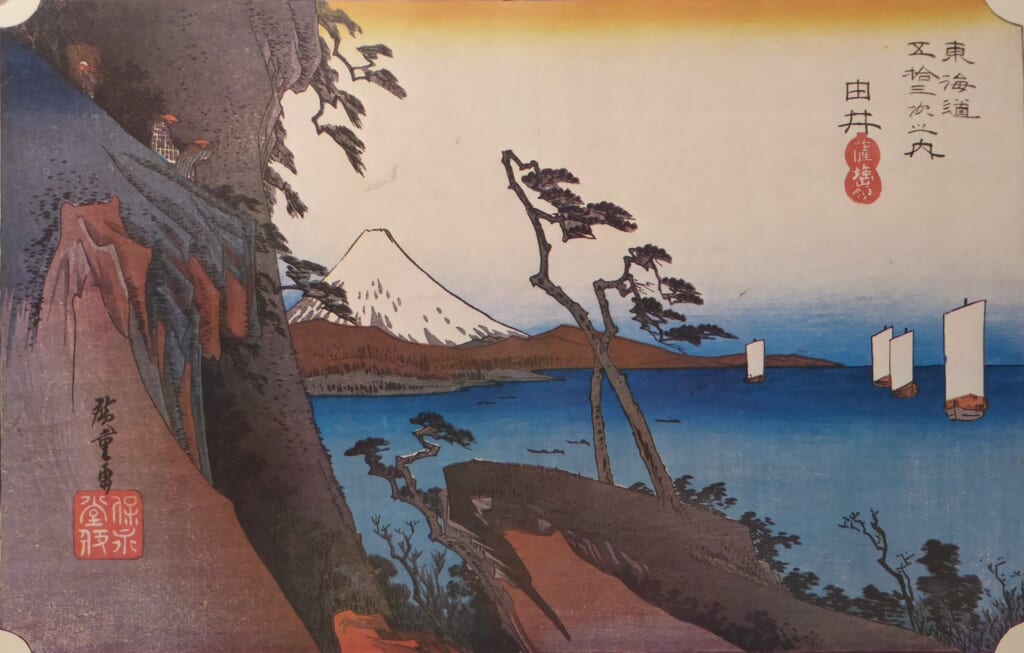
Gyousyo version
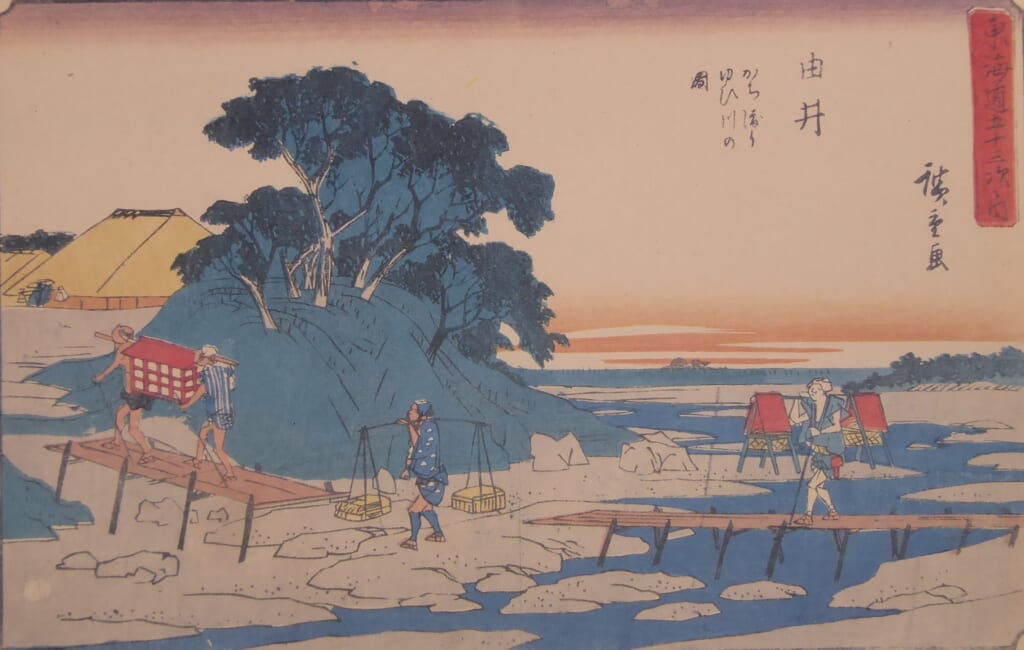
Reisho version
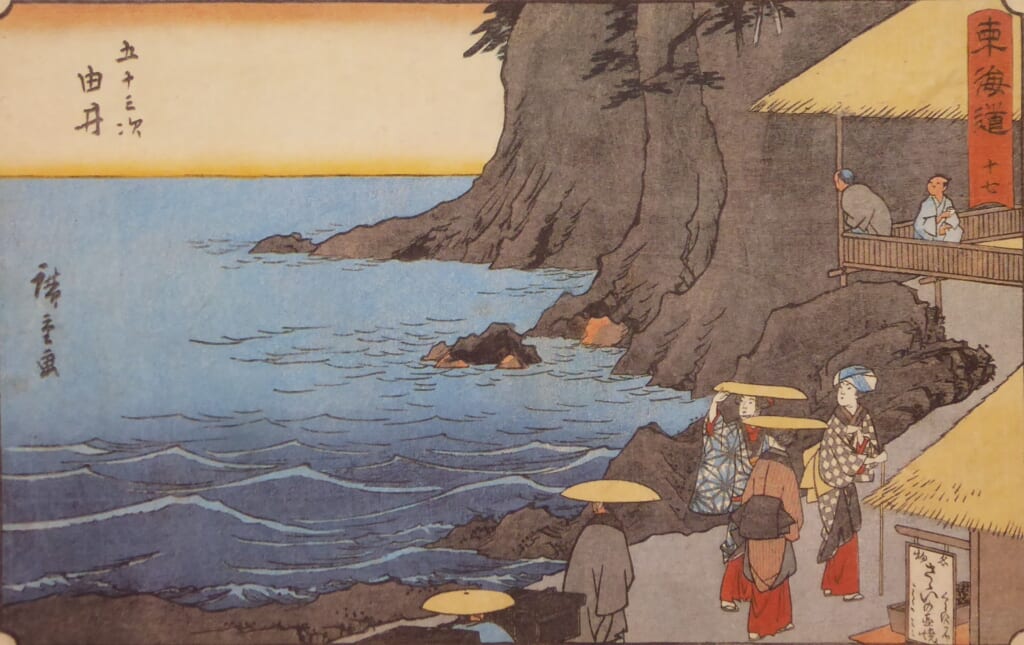
Hokusai version
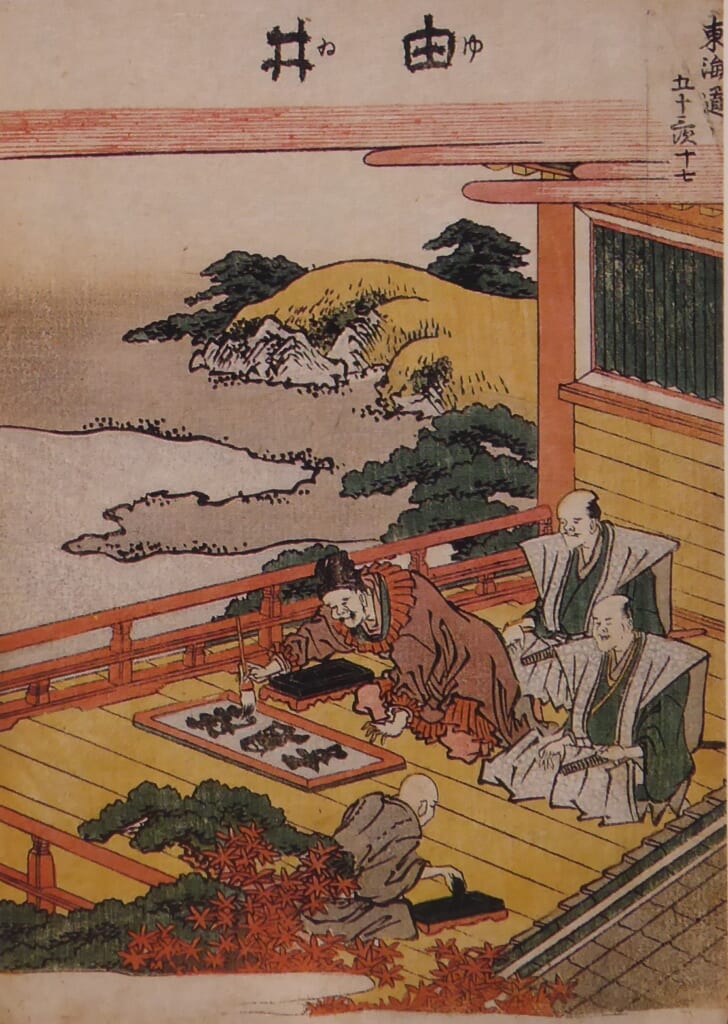
Travel image
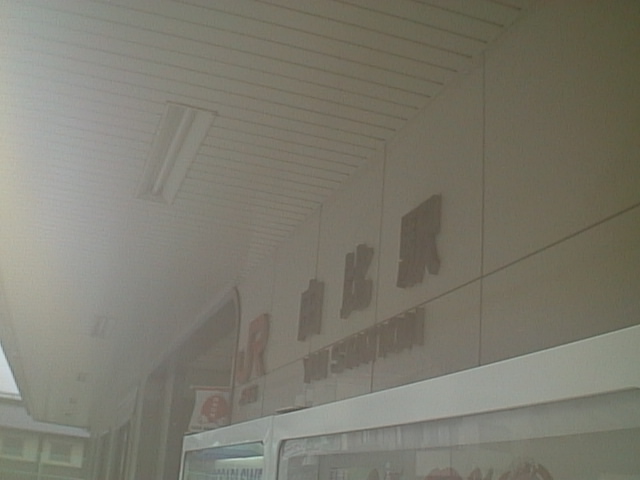
Stamp image
